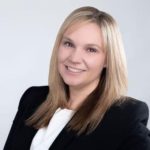Known as the winter blues, seasonal depression, among other names, seasonal affective disorder (SAD) is a depressive disorder that affects millions of people.
Known as the winter blues, seasonal depression, among other names, seasonal affective disorder (SAD or seasonal depression) is a depressive disorder that affects millions of people. SAD symptoms tend to affect people during the darker winter months but may also occur at seasonal changes.
What is Seasonal Affective Disorder?
Seasonal affective disorder is more than just feeling down during the winter or feeling sad at the holidays. So, what is seasonal affective disorder? Seasonal affective disorder is a pattern of depression that occurs during the same time every year. Usually, this occurs during the fall and winter months when it is colder and there is less sunshine. SAD is more than mild feelings of sadness. SAD affects a person’s ability to conduct their life as normal.
Types of Seasonal Affective Disorder
There are two types of seasonal affective disorder defined by when symptoms typically occur: fall onset and spring onset.
- Fall Onset. Also known as “winter depression,” symptoms begin in late fall to early winter and begin to improve during summer months.
- Spring Onset. Also called “summer depression,” symptoms appear in late spring to early summer. This type of seasonal depression is much less common than fall onset.
Seasonal Affective Disorder Symptoms
Seasonal affective disorder symptoms are essentially the same as symptoms of major depressive disorder. SAD is a sub-type of major depressive disorder. The only difference is the symptoms are contained to a season or seasons. Symptoms of SAD include:
- Feeling hopeless
- Feeling helpless
- Change in appetite
- Decreased energy
- Fatigue
- Change in sleep
- Restlessness
- Feeling sad
- Crying spells
- Thoughts of being better of dead
- Thoughts of hurting self
Causes of Seasonal Affective Disorder
Like other depressive disorders, the exact cause of seasonal affective disorder is unknown. While researchers continue to ask what causes seasonal affective disorder, there have been some proposed seasonal affective disorder causes. It has been theorized that SAD is caused by a combination of genetics and life events. Like major depressive disorder, it has been suggested that individuals with SAD have an imbalance of brain chemicals. However, it is likely that the imbalance is less severe in individuals with SAD which allows normal functioning during part of the year. Traumatic experiences and loss experiences may affect the development of SAD. This is especially true if the experience occurred near a memorable part of the year such as near the winter holidays.
Diagnosing Seasonal Affective Disorder
One of the challenges with diagnosing this condition is the need to recognize the pattern. Symptoms must occur for two years with the same seasons being symptomatic and asymptomatic consistently. In order to diagnose seasonal affective disorder a clinician will ask about patterns of symptoms. A person who thinks they may have seasonal affective disorder can help the diagnosis process if they are aware of their symptom pattern and can share this with a professional.
Who is at Risk for Seasonal Affective Disorder?
Seasonal affective disorder affects people across the world. However, there are some risk factors of seasonal affective disorder that may increase the probability of developing this disorder. Seasonal affective disorder risk factors include:
- Living in areas where there is little daylight in the winter and long periods of daylight during the summer
- Disrupted circadian rhythms and irregular sleep patterns
- Having family members with SAD
- Being female
- Being between the ages of 20 and 50
Seasonal Affective Disorder Statistics
Seasonal affective disorder statistics demonstrate the commonality of this disorder.
- Approximately 6 percent of the population struggle with SAD. People living at higher latitudes are more likely to be affected with about 10 percent of the population being diagnosed with SAD
- As many as 6 percent of people affected by SAD require hospitalization for their symptoms
- More than half of people with SAD also have a family member with a depressive disorder
- People with SAD and other mood disorders are twice as likely to have a substance use disorder than the general population
Seasonal Affective Disorder and Substance Abuse
Seasonal affective disorder and addiction often co-occur. Much like other depressive disorders, it appears that people with SAD may self-medicate with substance use. While the use of any substance has been related to SAD, it has been found that alcohol use disorders most frequently co-occur with this depressive disorder. This may be due to the increased craving for carbohydrates that occurs during the winter when there is less daylight.
It has also been found that people who did not previously have symptoms of seasonal affective disorder who enter recovery from substance use may develop SAD in recovery. For a person in recovery, symptoms of SAD may trigger a relapse. It is important for a person to be aware of SAD symptoms and their personal pattern of symptoms. Having a personalized relapse prevention plan can help a person in recovery who struggles with SAD.
Seasonal Affective Disorder Treatment
Seasonal affective disorder treatment may include therapy and medication management like the treatment of other depressive disorders. These treatments may be used year-round or just during months where SAD symptoms are experienced. Another treatment that has been suggested is the use of light box therapy. A prescription light box emits light like what is given by the sun. Sitting near the light during the day may supplement for the light that does not occur naturally during winter months.
Do you or someone you love struggle with seasonal affective disorder or substance use? Treatment at The Recovery Village can help bring peace of mind and happiness with a life free from alcohol and other drugs. With facilities located across the country, the professionals at The Recovery Village are ready to help you heal. Call a representative today for more information.


Blair, Hisaho. “Less Sunlight Means More Blues For Some.” NAMI, January 22, 2013. Accessed February 20, 2019.
NAMI. “Major Depressive Disorder With A Seasonal Pattern.” August, 2017. Accessed February 20, 2019.
Roecklein, K. A., & Rohan, K. J. (2005). Seasonal affective disorder: an overview and update.
National Institute of Mental Health. “Seasonal Affective Disorder.” (n.d.) Accessed February 20, 2019.
Johns Hopkins Medicine. “Sesonal Affective Disorder.” (n.d.) Accesed April 16, 2016.
The Recovery Village aims to improve the quality of life for people struggling with substance use or mental health disorder with fact-based content about the nature of behavioral health conditions, treatment options and their related outcomes. We publish material that is researched, cited, edited and reviewed by licensed medical professionals. The information we provide is not intended to be a substitute for professional medical advice, diagnosis or treatment. It should not be used in place of the advice of your physician or other qualified healthcare providers.